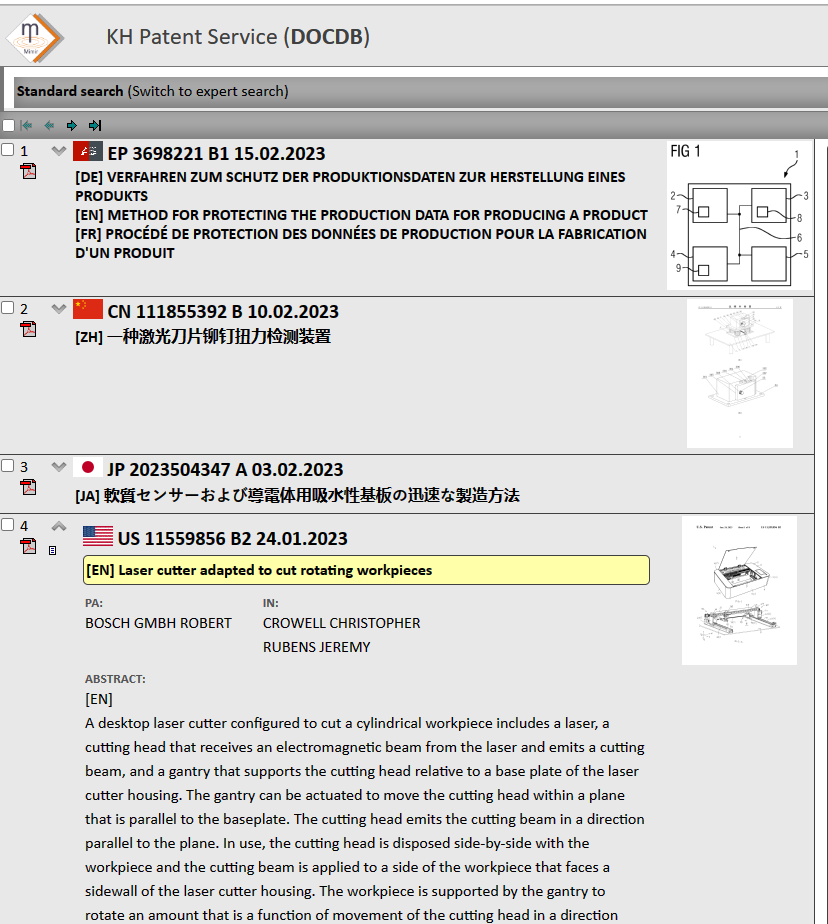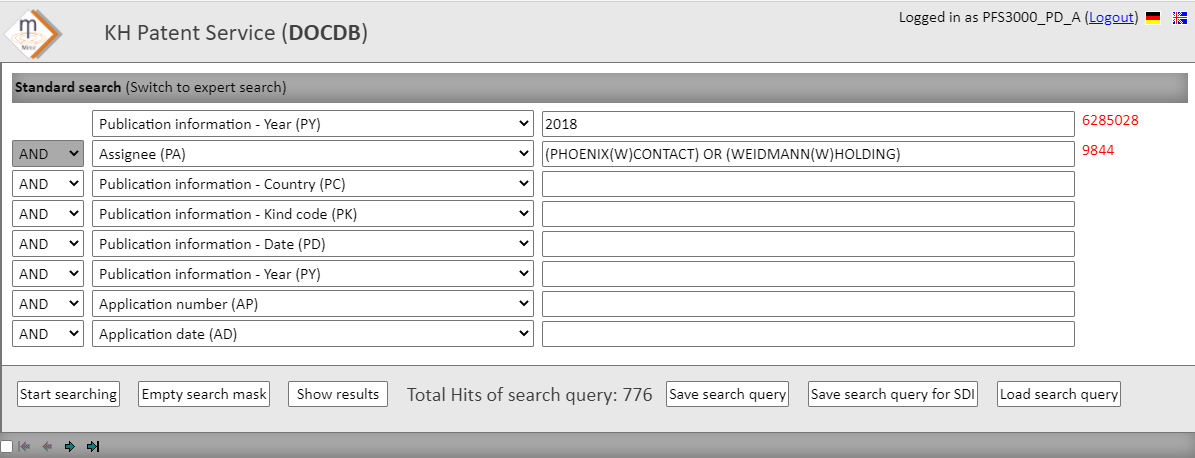XPAT Data Selection Interface
So far, XPAT has been offered in the basic version for use with freely available data. Most of the data sets were downloaded by downloading from the EPO's Open Patent Service. This mechanism was preserved for the system and is still available.
XPAT Data Selection database with around 130 million data records
With this bookable database, a complementary solution was created. Based on the DocDb data from the EPO, this
data can now be offered in its own database. Over 130 million documents are now available for searching in XPAT. This new database
can be used in two variants::
- as a pure search database with an online account
- as a search database with the option to transfer the search results directly into the internal XPAT database.

Transfer data to XPAT
With the second option, an XPAT user is allowed both to keep his documents internally as before, to classify them, to comment on them and to have them evaluated in one or more patent rounds. On the other hand, it is possible at any time to search freely in the documents via the interface and, if required, to view documents directly on the screen, to mark interesting documents and, for example, to load only the relevant writings into the internal XPAT database.
Search in XPAT Data Selection
Also when searching in the XPAT Data Selection database, the universally proven search language, which is also used
in XPAT itself, can be used. The XPAT Data Selection Interface greatly expands the possibilities for XPAT users. State of the art data
can be transferred directly into your own system up to a key date.
This interface is the option to add to the standard system. The documents have the bibliographic data and the abstracts. Full texts are
not available here. These must be loaded with the completion grabber.

This interface is the option that can be added to the standard system.
- Direct access from XPAT
- Fast download
- Unified search options
